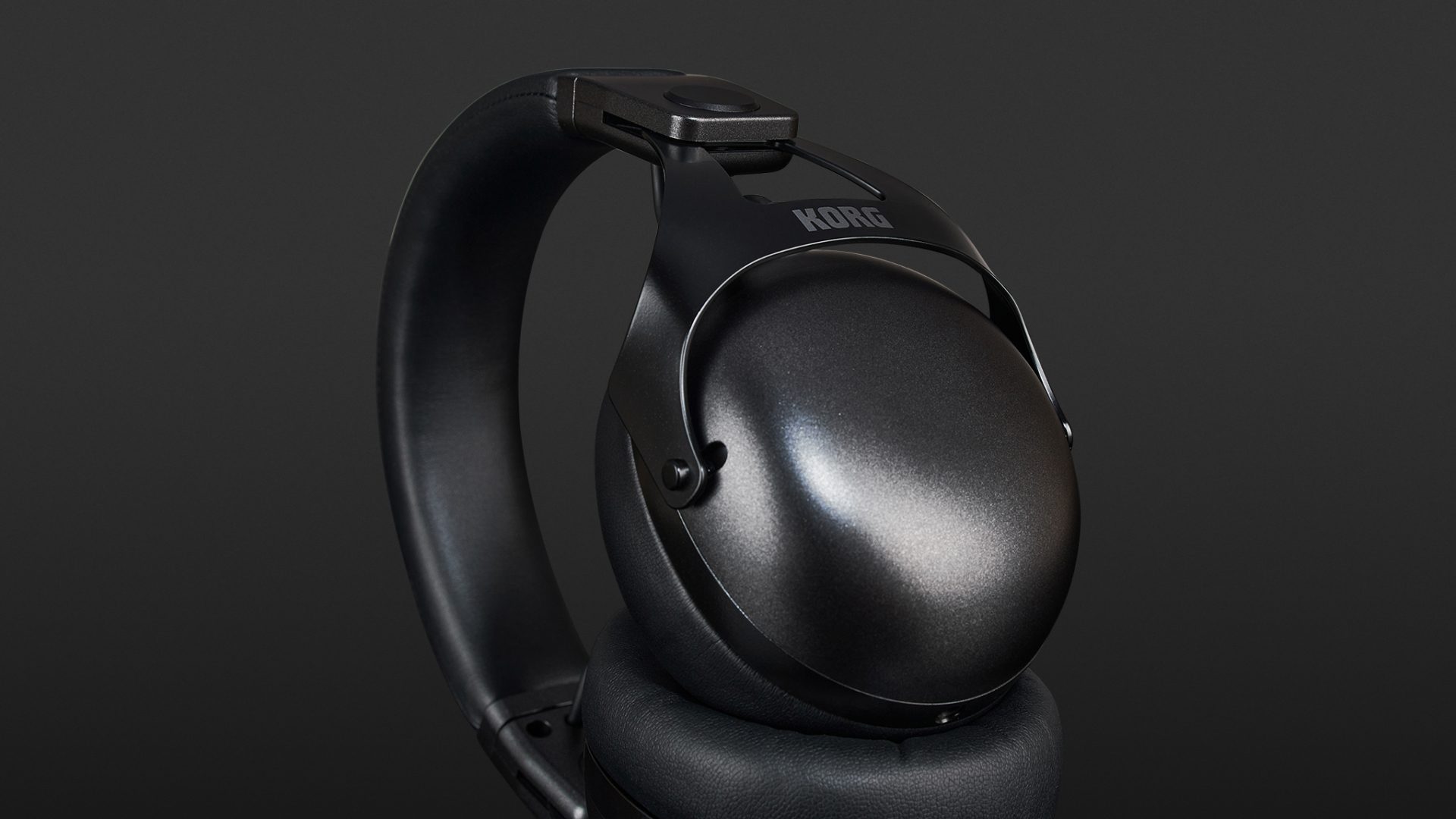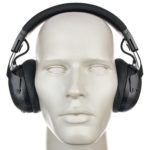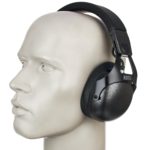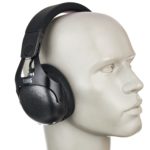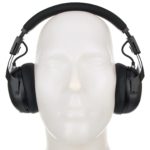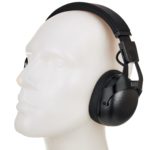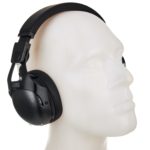With the NC-Q1, Korg presents an ambitious closed pair of headphones that are supposed to be at home in the professional field as well as for use on the go. In terms of sound quality, the result was quite satisfactory, even if somewhat emphasised in the bass range and therefore not neutral. An interesting feature is undoubtedly the level-fixed noise cancelling, which should provide a good argument for a purchase among musicians and DJs, which they should definitely put to the test. On the other hand, I see weaknesses in the operation of the extensive range of features. In my opinion, Korg could solve a large part of the problems mentioned by providing an app, and in view of the price, I would continue to hope for such a thing.
With the closed NC-Q1, Korg is initially targeting musicians and DJs and aims to offer them a pleasant listening environment and protection from levels that are too high with a specific combination of passive external insulation and active noise cancelling. At the same time, these headphones can be used as a mobile accessory via Bluetooth. With a recommended retail price of 349 euros, Korg confidently enters the market with a robust design and lush features.

Construction
The replaceable ear cups are lushly padded with faux leather and attached to the equally padded length-adjustable headband via metal brackets. The ear cups cannot be rotated or folded, but they can be swivelled at a generous angle in both directions so that one ear cup can be “folded away” for DJing. And at around 320 grams, these headphones are light enough for long listening sessions.
The NC-Q1, which are primarily designed for functionality, are available in both matt black and decorative white. This complements the nearly identical Vox VH-Q1, which are also available in two colour variants.
On the left ear cup, you will find the micro-USB connection and on the right side are the controls in the form of four buttons, volume control for the so-called ambient sound function and a multifunctional rocker switch. In addition, the outside of this ear cup is equipped with a touch sensor. Mini-jack sockets for cable operation are located on both the left and right ear cups, so you have a free choice. The connection cable itself can be plugged in but is not screwed in. Although the plugs are made of aluminium, the transition to the jack could have been designed with better strain relief for studio and live use.
The battery power for active cable and Bluetooth operation is impressive at 1,200 mA. Depending on the level and codec, these headphones last a credible twelve hours and about three times that in wired mode. But the NC-Q1 can also be operated purely passively. The keyword here is Bluetooth: In terms of codecs, Korg offers respectable support for SBC, AAC, aptX and aptX HD, as well as compatibility with the 5.0 standard.
In practice
These headphones fit comfortably and stably on the head due to their soft padding, even during longer listening sessions. In addition to this high level of wearing comfort, good passive noise attenuation is also provided, both internally and externally. However, depending on the ambient temperature, the imitation leather material can cause sweating. The NC-Q1 has a real advantage because it can be used universally – as a wired system by a club DJ, with or without noise-cancelling, and finally as a mobile Bluetooth solution.
A selection of voice messages that cannot be switched off making it easier to find your way around the function controls. In addition to an on/off switch, noise-cancelling also has a dedicated button. A large part of the controls are handled by the aforementioned rocker switch with a push function. This controls the volume, start and pause of music playback, track jumps in both directions, telephone calls and makes it possible to call up a voice assistant. Two buttons located further out are dedicated to control of the ambient sound function and level reduction for the external microphones (see Noise Cancelling).
In practice, control via the rocker switch is occasionally awkward and requires some familiarisation. This also applies to the sensor technology. By covering the surface with your hand for a longer period of time, the ambient sound monitoring is switched on permanently. It then works on both sides, stops the current playback and fades in external signals via the corresponding microphones into the listening channel to enable better communication. In contrast, a simple tap on the sensor surface leaves the playback status (at a reduced level) and activates monitoring on just one side of the headphones until you touch them again.
In this mode, the “Sound Enhancing” button gives access to several EQ pre-sets, which, contrary to expectations, only affect the monitor signal. The same button can be used to decide whether monitoring is done on the left or right earcup. In both modes, the small fader is also active, and this adjusts the level of the external microphones and thus the monitor level, and in practice, this works convincingly.
One stumbling block is the additional sensor that detects whether the headphones have been put on. When the electronics are activated, the NC-Q1 automatically starts playback or stops it when the headphones are put down. According to the manufacturer, the headphones must be firmly in place in order to function reliably, and this also applies to the noise-cancelling function. In practice, this sensor system frequently caused irritations. Depending on the movement of the head and the setting of the headband, there were repeated unwanted interruptions and resumptions of music playback, even when sitting down. In fact, it happened to me so often when I was walking around that I cannot make a recommendation in this regard. The sensor system also repeatedly temporarily disabled the touch function. This is a pity, and for me, gave a major reason to want to be able to adjust or switch off such settings via an app.
Noise cancelling
Korg uses a proprietary noise-cancelling design that provides clipping resistance that is supposed to be particularly useful for musicians in noisy environments. The noise cancellation function itself can only be switched on and off. For technical purposes, there are microphones on the outside of each side and also inside the ear cup for further control. The external microphones are exceptionally resistant to clipping, in keeping with their suitability for professional use. This makes sense, as the noise-cancelling system has to rely on the external microphones to capture the noise and send it out of phase into the listening channel. If this results in overload, the whole system is thrown into disarray.
If the environment is explicitly loud, the sensitivity of the external microphones can be reduced via this attenuator. Korg wants to ensure a level stability of up to 110 dB. At the same time, the manufacturer claims that the noise-cancelling improves the signal-to-noise ratio by 30 to 35 dB.
In practice, the noise-cancelling effect is clearly noticeable, but less intense in its reduction as with Sony, for example. Static and low-frequency noises are nevertheless noticeably lowered in level and thus, in combination with the strong padding, an improved signal-to-noise ratio and quiet space is created. Of course, this becomes relevant in the special case of explicitly loud outside noise levels. A loud clap of the hands or placing the head directly in front of a loud guitar amplifier did not disturb the system. The microphones only reacted audibly to the wind.
Sound
The NC-Q1 uses dynamic “peek diaphragms” with a diameter of 41 mm. This is a five-layer composite diaphragm built on plastic, which, according to the manufacturer, covers a frequency response from 10 Hz to 25 kHz.
Out of habit, I used them with Bluetooth first: the NC-Q1 delivered a powerful level here. The basic sound quality was good and pleasantly powerful, but the headphones are a little too full-bodied in the bass range. At the same time, these headphones are sufficiently precise in terms of tonality, dynamics and decay, and they also cover the low bass audibly without getting too boomy. Nevertheless, in view of the tuning, I would have liked it if the EQ pre-set curves could also have been used as a function for the playback signal.
The NC-Q1’s tuning slightly over-emphasises the mids and highs, but the important midrange is not under-represented in voices, acoustic instruments and dense mixes. They deliver an appealing detail resolution and pleasant sonic fullness, for example on Daft Punk’s “Get Lucky”. With distorted guitars, however, it can sound a bit too harsh in the high-mids, depending on the mix. In the highs, the NC-Q1 delivered sufficient transparency that, although it could not compete with audiophile designs, certainly provided the necessary “airiness” and a transient mapping with which details, the stereo panorama and the room were reliably reproduced.
The active cable mode corresponded largely to the Bluetooth mode, although data compression was not used. I had few expectations of the passive mode – but I was wrong. Although the system loses some transparency, presumably due to the lack of digital equalisation, the sound is by no means dull or lifeless, but pleasantly powerful and strong. In the bass, the headphones were a bit loud, but still sufficiently defined. A powerful tuning that delivers the necessary enjoyment, which is something that can be particularly in demand in the club genre. Surprisingly, I didn’t notice any harshness in this mode.
I would put it this way: The NC-Q1 delivered a decent passive performance, but this is also available from well-known competitors in closed systems aimed at the professional sector for a lower price. In the end, I would not call the NC-Q1 a neutral monitoring unit for production, neither in active nor passive mode.
Finally, I would like to mention the good voice quality that these Korg headphones delivered during phone calls.
Technical specifications
- Ear couplingOver-ear
- Typeclosed
- Transducer principledynamic
- Frequency response (headphones)10 - 25.000 Hz
- Weight with cable320 g
What's in the box
- Mini jack cable
- Adapter to 6.35 mm
- USB charging cable
- Carrying case
Special features
- available in black or white
- BT codecs: SBC, AAC, aptX, aptX HD
- BT-Version: 5.0
- BT-Profile: A2DP, AVRCP, HFP, HSP









